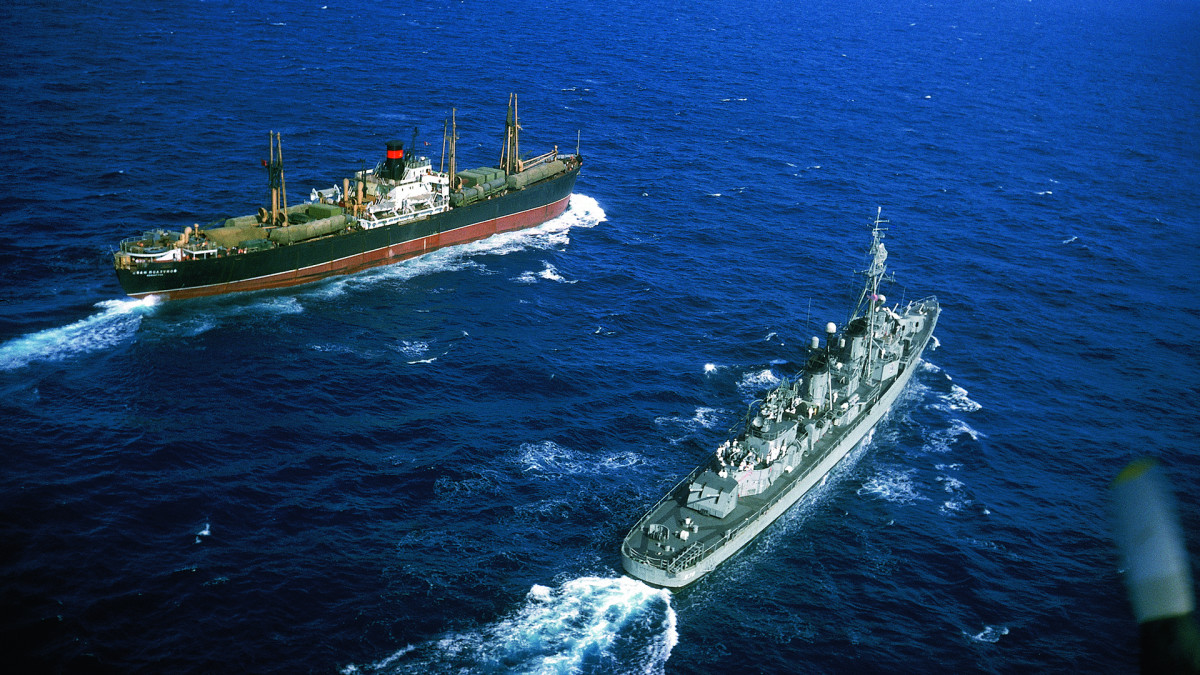October 24, 1962 was a critical day in the unfolding of the Cuban Missile Crisis, a tense 13-day confrontation between the U.S. and the USSR that nearly provoked a nuclear war.
On this day, Soviet ships heading for Cuba approached a blockade of U.S. vessels enacted by American President John F. Kennedy. Kennedy had been informed just days earlier of the presence of nuclear-armed Soviet missiles in Cuba, 90 miles from U.S. shores.
The naval blockade around Cuba was intended to prevent the Soviets from delivering more military equipment and missiles. Once news of the missiles and Kennedy’s response was made public, Americans and people around the world waited anxiously for the response of the Soviet leader Nikita Khrushchev.
Fortunately, when the Soviet ships approached the American naval blockade on October 24th, they stopped rather than attempting to breach it. If they had, this action would have been met with military confrontation and could have quickly escalated into nuclear warfare.
Although a battle at sea was narrowly avoided, the missiles installed on Cuban land still posed a large problem for the Americans, and the tension between the two parties continued in the days following the blockade.
Eventually, Soviet leaders agreed to remove the missiles in exchange for a public announcement promising that the U.S. would not invade Cuba. President Kennedy also privately agreed to remove U.S. missiles from Turkey. This deal brought the Cuban Missile Crisis to an end on October 28, 1962. In the year following the crisis, both parties signed two treaties related to nuclear weapons.

